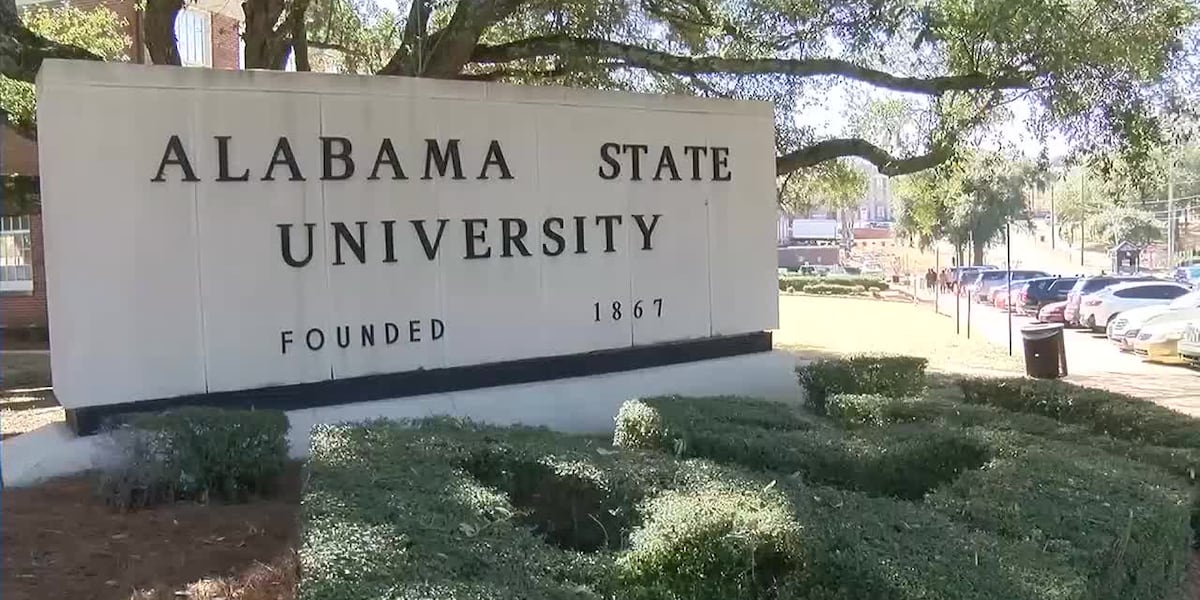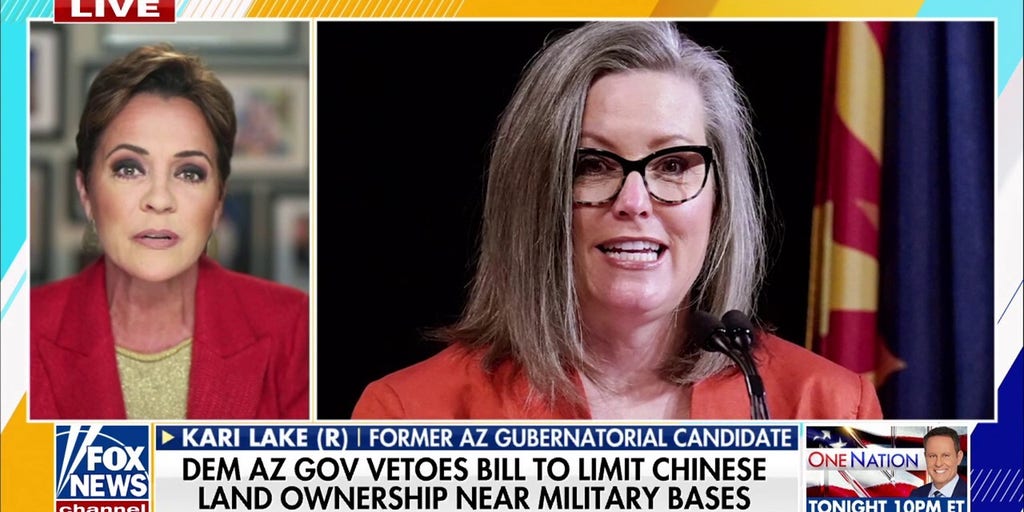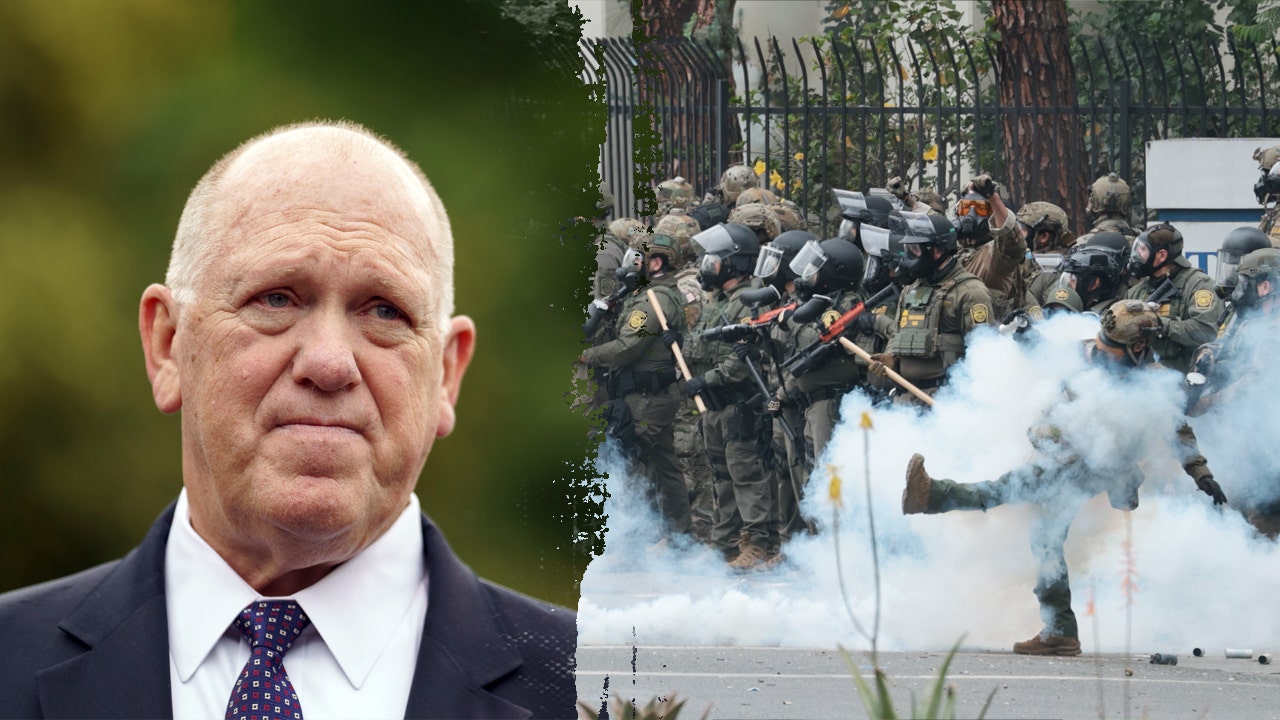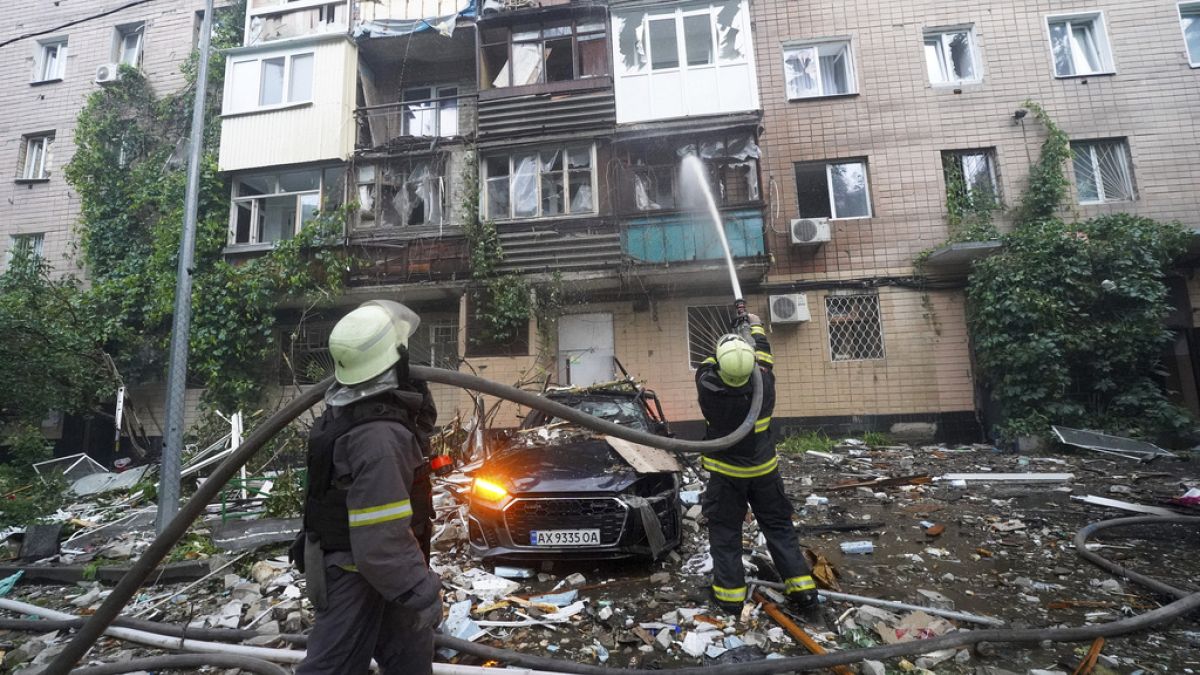Business
Sam Altman tells Trevor Noah what he really thinks about his ouster, the dangers of AI and Taylor Swift

When Sam Altman was abruptly fired last month as CEO of artificial intelligence powerhouse OpenAI, the rupture left him with a lot of thinking to do.
But looking back on the experience, Altman told comedian Trevor Noah in a video podcast released Thursday morning, there may have been some upside.
“The empathy I gained out of this whole experience, and my recompilation of values, for sure was a blessing in disguise,” Altman told the former “Daily Show” host in one of his first major interviews since triumphantly returning to the tech company. “It was at a painful cost, but I’m happy to have had the experience in that sense.”
It was one of several subjects the technologist — whose company is behind major consumer AI products such as ChatGPT and DALL-E, making him the face of the current AI boom in many ways — opened up about on the latest episode of Noah’s Spotify podcast “What Now?”
1. Altman was at the Las Vegas Grand Prix when he got fired.
In response to a question from Noah about where he was when he got the news that the OpenAI board had fired him, Altman said he was where a lot of rich, influential Californians were at the time: Las Vegas, for the Formula One Grand Prix.
“I never got to watch any race that whole weekend,” he told the host as the two sat around a simple wooden table in what they implied was OpenAI’s office. “I was in my hotel room, took this call, had no idea what it was gonna be, and got fired by the board.”
His phone started blowing up with messages to the point where iMessage stopped working, Altman added. Employees began quitting; Microsoft, a major investor in OpenAI, was calling people up.
Returning to OpenAI was not yet on his mind, Altman continued, but he knew he wanted to keep working on developing generalized artificial intelligence. He flew back to California and started contemplating his next move.
“It felt like a dream,” Altman said of the experience. “I was confused, it was chaotic. It did not feel real.”
2. He still has some hard feelings about the whole ordeal.
“This was a very painful thing and felt to me, personally, just as a human, super unfair — the way it was handled,” Altman said of his surprise sacking.
It’s still unclear why exactly the OpenAI board tried to push Altman out, although speculation has circled around possible disagreements over how quickly the firm should be trying to develop and commercialize advanced AI systems. Because of OpenAI’s structure, which holds the firm’s for-profit elements subservient to a nonprofit board, the firm does not hold money-making as its core objective. Instead, it aims to develop artificial intelligence for the betterment of all mankind.
The board sought to push out Altman quickly and with the benefit of surprise, subsequent reporting has revealed. But beyond an initial claim that he’s been inconsistently candid in his communications with them, the board has been tight-lipped about what motivated its attempted coup.
The Saturday morning after he got fired, Altman told Noah, “a couple of the board members called me and said, ‘Would you like to talk about coming back?’ ”
“I had really complicated feelings about that,” he added. “But it was very clarifying at the end of it to be like, ‘Yes, I do.’ ”
3. Altman got a firsthand look at what it’s like to lose your job.
In the closing minutes of the interview — which remained amiable for its hour and 15-minute run time — Noah made a friendly but pointed observation that Altman’s firing paralleled the job losses a lot of people fear his technology will bring about at a societal scale.
“Continue to remember that feeling you had when you were fired as you’re creating a technology that’s gonna put many people in a similar position,” Noah encouraged the chief executive.
“Y’know what I did Saturday morning — like early Saturday morning, when I couldn’t sleep?” responded Altman, seemingly referring to the day after his Friday dismissal. “I wrote down: ‘What can I learn about this that will help me be better when other people go through a similar thing and blame me like I’m blaming the board right now.’”
It made him more empathetic, he added.
4. Altman still believes in AI, despite its risks.
For all the boardroom drama of the last month, Altman remains enthusiastic about artificial intelligence — even as he cautions that it will come with downsides.
“This is gonna be a force to combat injustice in the world in a super important way,” he told Noah. “These systems will be — they won’t have the same deep flaws that all humans do. They will be able to be made to be far less racist, far less sexist, far less biased. They’ll be a force for economic justice in the world.”
But, his host asked, is it really possible to make AI completely safe? What is Altman’s nightmare scenario?
Safety is not a binary but a balance between risks and benefits, Altman said, pointing to society’s continued embrace of planes (despite occasional crashes) and pharmaceuticals (which still have side effects).
“But it doesn’t mean things aren’t gonna go really wrong,” he added. “I think things will go really wrong with AI. What we have to prevent” are existential risks, or the threat that AI could wipe out mankind in the same way nuclear arms might.
5. He had some kind words for Taylor Swift.
Altman was just named CEO of the Year by Time Magazine, missing out on the top spot to 2023 Person of the Year Taylor Swift.
But he doesn’t envy her for it, he told Noah.
“I have had more attention this year than I would have liked to have in my entire life,” he explained, and it has at times been tough on his personal life. He’s “happy for Taylor Swift.”

Business
Los Angeles County fire victims sue AAA and USAA, alleging insurance fraud

Los Angeles County fire victims have filed lawsuits against three large home insurers alleging they were systematically underinsured, leaving them without enough money to replace or rebuild their homes after the Jan. 7 blazes.
The twin lawsuits, filed Wednesday in Los Angeles County Superior Court, allege that USAA, a Texas-based insurer that serves the military community, and two insurers affiliated with AAA for years underestimated the replacement cost of the homes, lulling the policyholders into buying inadequate coverage.
“These families paid their premiums, trusted their insurers, and did everything right,” attorney Gregory L. Bentley said in a statement. “But when disaster struck, they learned their coverage was little more than an illusion. These companies promised peace of mind, but instead left their members stranded, homeless, and hopeless.”
The lawsuits allege fraud, negligence, breach of contract and other causes of action, and seek damages and reform of the insurers’ practices.
Bekah Nelson, lead communications director for USAA, said that the company was reviewing the lawsuit and could not comment on specifics, but said “USAA’s dedication to outstanding member service is widely recognized.”
“When wildfires struck Southern California, our teams were on the ground within days, working to support our members in their time of need. To date, we have paid nearly $1.4 billion to help members recover from their losses,” she said, adding the company has made payments on more than 90% of homeowner claims.
A spokesperson for CSAA Insurance Exchange, which primarily serves AAA members in Northern California, said it does not comment on pending litigation. A spokesperson for the Interinsurance Exchange of the Automobile Club, which serves AAA members in Southern California, also declined comment.
The lawsuits open a new front in the litigation that has been spawned by the catastrophic fires, which caused at least 29 deaths and damaged or destroyed more than 16,000 homes and businesses in Altadena, Pacific Palisades and other communities.
Several lawsuits have been filed against the California Fair Plan Assn., the state’s insurer of last resort, alleging that it is not adequately handling smoke-damage claims arising out of the fires.
More than 100 of the state’s licensed home insurers, including the CSAA, USAA and the Interinsurance Exchange, are defendants in an April lawsuit accusing the companies of colluding to drop policyholders and force them onto the FAIR Plan in order to reduce their claims exposure. The plan’s policies typically cost more and offer less coverage than traditional commercial insurance.
The lawsuits filed Wednesday, which are virtually identical except for details pertaining to the different defendants, allege that the problem of underinsurance is “pervasive” and stems from “cost estimator software many insurers use to recommend coverage limits to insureds,” as well as “poor design choices, perverse profit and commission incentives, volume business, and other shortcomings.”
The lead plaintiffs in the lawsuit filed against the two AAA insurers, James and Lisa Fulker, bought a three-bedroom, two-bathroom, 1,872-square-foot home on Kingsport Drive in Malibu in 2020, according to the lawsuit.
The newly renovated home — which featured a kitchen with a center island, quartz countertops, high ceilings, a fireplace, an entertainment patio and a master suite with a walk-in closet and spa-like bath — had $713,000 in primary dwelling coverage and 125% extended replacement cost coverage, the lawsuit states.
After the fires, however, the couple found their coverage was inadequate as they received estimates of at least $800 per square foot or more to rebuild, far exceeding the $380-per-square-foot calculations of their insurer, the lawsuit states.
The lead plaintiffs in the USAA lawsuit, Ethan and Marijana Alexander, had a 2,135-square-foot, four-bedroom, three-bathroom, near-custom home on Bienveneda Avenue in Pacific Palisades that they bought in 2018, according to the lawsuit.
The home had $584,000 in dwelling coverage and a 25% home protection endorsement of $146,000, the lawsuit states.
Even with the additional coverage, the complaint alleges the couple don’t have adequate insurance to rebuild, with USAA calculating the cost at $342 per square foot and the couple receiving estimates at more than $850 to $1,000 per square foot, the lawsuit states.
Business
Jobs at the Port of Los Angeles are down by half, executive director says

Job opportunities at the Port of Los Angeles are dwindling as President Trump’s steep tariffs take a hit on global trade and a major economic engine for the regional economy.
Nearly half of the longshoremen who support operations at the port went without work over the last two weeks, Gene Seroka, executive director of the Port of Los Angeles, said in an interview.
The port processed 25% less cargo than forecast for the month of May, he said.
Trump’s tariffs have drastically stemmed the flow of goods into the U.S., driving down activity at the neighboring ports of L.A. and Long Beach, which collectively processed more than 20 million 20-foot-long cargo units last year.
The two ports are the largest in the country and provide jobs for thousands of dockworkers, heavy equipment operators and truck drivers.
But work has fallen off sharply in recent weeks. Over the last 25 work shifts, only 733 jobs were available for 1,575 longshoremen looking for work.
“They haven’t been laid off, but they’re not working nearly as much as they did previously,” Seroka told The Times. “Since the tariffs went into place, and in May specifically, we’ve really seen the work go off on the downside.”
Marine terminal operators post available work opportunities, known as job orders, on a digital board at the port three times a day. Longshoremen can review the job orders at each shift and bid on the jobs they want to take. If there are more longshoremen than job orders, a portion of workers will go without pay.
The average of 733 job orders posted over the past 25 shifts, which is equal to roughly two weeks, is unusually low.
Ordinarily, between 1,700 and 2,000 job orders are posted during a typical day shift, and between 1,100 and 1,400 are posted during a standard night shift.
Seroka attributed the decrease in job opportunities to lower cargo volume moving through the port.
In May, 17 cargo ships canceled their planned trips to Los Angeles amid uncertainty over duties the Trump administration imposed worldwide.
Although May is typically a busier month than April, this past May saw 18% less cargo processed than the month prior, according to port data.
The falloff comes during a critical time in advance of the Christmas shopping season, orders for which are usually placed before July 1.
Conditions are not expected to significantly improve anytime soon.
“The June numbers that we’re projecting right now are nowhere near where they traditionally should be,” Seroka said.
An average of five ships have entered the port each day over the last week. This time of year, there would typically be between 10 and 12 ships in the port each day.
“The drop in cargo volume caused by Trump’s tariffs will mean empty shelves when products don’t reach our stores, rising prices on everything from groceries to clothes to cars, and undoubtedly, more Americans out of work,” U.S. Sen. Alex Padilla of California said in a news conference last month.
The decline in shipping has broader ripple effects on L.A.’s logistics economy.
A 2023 report found that the ports of Los Angeles and Long Beach contributed $21.8 billion in direct revenue to local service providers, generating $2.7 billion in state and local taxes and creating 165,462 jobs, directly and indirectly.
A decline of just 1% in cargo to the ports would wipe away 2,769 jobs and endanger as many as 4,000 others, the study found.
Union officials could not be reached for comment on Friday but had previously predicted job losses for their members.
“Some of the workforce will not be getting their full 40 hours a week based on the loss of cargo,” Gary Herrera, president of the longshoremen union ILWU Local 13, warned last month.
“That is going to have an effect on the work opportunities for not just us, but for truck drivers, warehouse workers and logistics teams,” he said.
The slowdown in activity at the ports of L.A. and Long Beach has also spread into surrounding communities. Businesses in the area rely on a robust community of port workers to frequent their establishments.
“We’re starting to hear from small businesses and restaurants in the harbor area that their customer patronage is trending downward,” Seroka said. “Outside of COVID, this is the biggest drop I’ve seen in my career.”
Business
Venture capital investment is rising in Los Angeles — and not just for AI startups
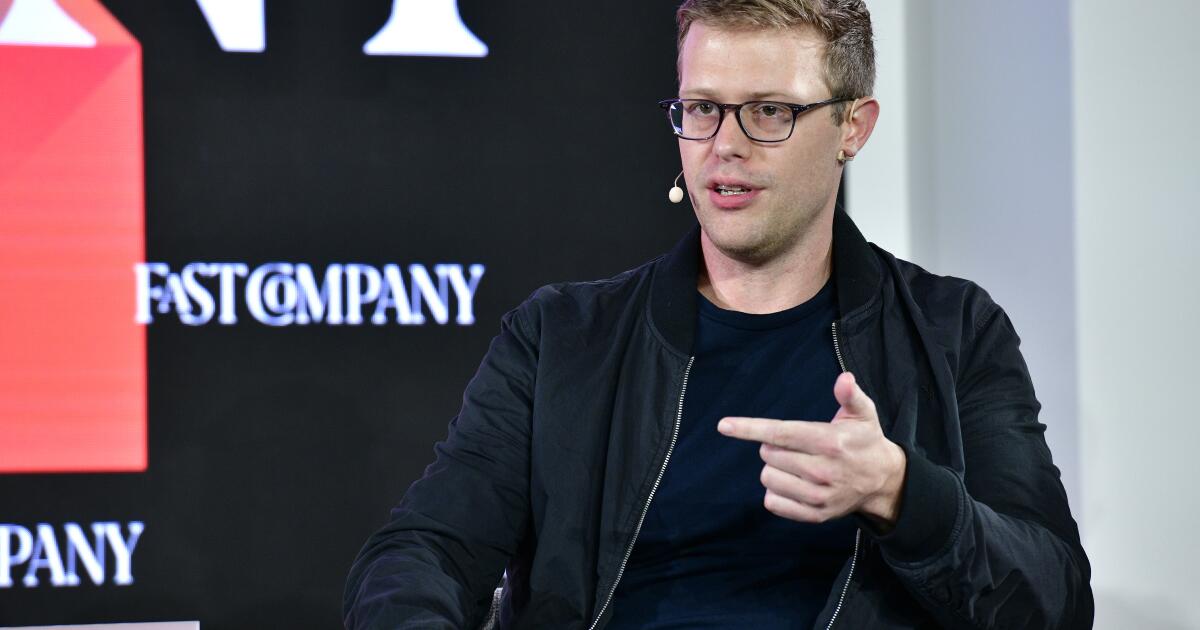
Early this year, private equity firm Blackstone bet big on the future of artificial intelligence by investing $300 million in a Chatsworth company that’s been around for more than two decades.
The company, DDN, helps businesses store and manage the massive trove of data that powers AI systems — the lifeblood needed for chatbots, self-driving cars and more. DDN’s high-profile customers include chipmaker Nvidia, Elon Musk’s AI startup xAI, Google Cloud and Ford. DDN, short for DataDirect Networks, has roughly 1,000 employees.
“They have a trillion dollars of assets under management, and it’s a company that we thought would really move the needle for us in terms of extending our reach,” said Jyothi Swaroop, DDN’s chief marketing officer.
The investment was among the largest this year in the Greater Los Angeles region, which remains a hot spot for investments in both old and new tech companies poised for growth.
All told, venture capital investors and private equity firms poured $3.1 billion to fund 144 deals in the L.A. area in the first quarter of this year, up 15% from a year ago, according to research firm CB Insights. The area encompasses Los Angeles, Ventura, Orange, Riverside and San Bernardino counties.
While investment levels can fluctuate, funding in the greater L.A. region has steadily increased since 2023, when investment cooled following the collapse of the cryptocurrency exchange FTX.
Along with AI, investors also financed startups and established businesses in healthcare, e-commerce and defense technology, underscoring how investment in the L.A. market has diversified in recent years beyond ad tech businesses and video apps.
“Today it’s going into much more ambitious projects,” Mark Suster, a general partner at Santa Monica-based Upfront Ventures. “It’s going into satellites, alternate energy, national defense, drones, shipbuilding and pharmaceutical drug discovery. So it’s a lot more exciting than it ever has been.”
Los Angeles-area companies that received the most money in the first quarter include Torrance-based defense company Epirus with $250 million; and Thousand Oaks-based Latigo Biotherapeutics, which received $150 million, according to CB Insights. Latigo Biotherapeutics develops non-opioid pain treatments, while Epirus makes technology that helps defend against attacks from drone swarms.
Economic consulting firm Econic Partners raised the most funding with $438 million, according to CB Insights, which relied on a report filed with the U.S. Securities and Exchange Commission. Econic disputed the total, saying it raised nine figures in the first quarter, but the company declined to say how much.
Masha Bucher, founder and general partner at Day One Ventures, said she views El Segundo as the most promising hub for “deep tech” startups tackling complex issues, such as, water scarcity.
Businesses in the L.A. area have access to a highly qualified workforce from aerospace and defense tech companies. The tech hub known as Silicon Beach also is close to the airport, making it easy for entrepreneurs to hop on a plane to raise funding in San Francisco.
“There is a power of community, and it’s definitely like a power spot on the map,” Bucher said. The firm’s investments include various AI startups and an eye-scanning crypto project backed by OpenAI’s Sam Altman in which people verify they’re human.
Investors aren’t interested in only AI, however. Culver City-based Whatnot raised $265 million, one of the biggest deals in the L.A. area this year. The live shopping app allows people to buy and sell items such as clothing and collectibles. Potential customers can ask questions about products in real-time, find deals and bid for products shown in live videos.
Whatnot says it surpassed more than $3 billion in sales in 2024, and the company expects that figure to double this year. The startup, founded in 2019, says it isn’t profitable yet, but the TikTok rival has shown investors it’s growing fast.
“Live and social shopping has the potential to be an absolutely monstrous market,” Whatnot Chief Executive Grant LaFontaine said.
The company has roughly 750 employees across the United States and Europe. The funding will help market Whatnot to attract more users and hire people to improve the shopping experience, he said.
Like other businesses, Whatnot uses AI for customer service and to moderate content on the platform.
“I tend to be sort of a purist, which is that consumers don’t care about AI. They care about problems being solved,” LaFontaine said.
Businesses have been using AI long before the rising popularity of chatbots such as ChatGPT that can generate text, images and code.
But the frenzy surrounding what’s known as generative AI has meant that various industries are confronting how technology will disrupt the way they live and work.
Not surprisingly, investor interest in AI drove much of the nation’s venture capital commitments in the first quarter. San Francisco-based OpenAI secured the largest funding round of $40 billion, placing its valuation at $300 billion, according to CB Insights.
“There’s a ton of opportunity to rewrite the playing field on which people do business in everything from across verticals, across industries,” said Jason Saltzman, head of insights for CB Insights. “Everyone recognizes the promise, and … no one wants to miss out on the promise.”
Globally, $121 billion of venture capital was raised in the first quarter, with 20% of the deals received by AI companies — the highest amount ever, according to CB Insights. Nationally, $90.5 billion in venture capital was raised last quarter, with the bulk of the money going toward startups in Silicon Valley, which brought in $58.9 billion, the research firm said.
San Francisco has experienced a surge in AI startups expanding or opening up offices, drawn to the city’s swath of talent and the Bay Area’s universities. AI leaders including OpenAI and Anthropic also are based there.
OpenAI said it would use the money raised in the first quarter toward building its tools and investing in talent.
“People understand that this is a transformative technology,” said Chris Lehane, OpenAI’s vice president of global affairs in an interview. “It’s going to permeate virtually every aspect of life.”
Silicon Valley remains the far leader in venture capital AI investments, but other cities such as New York have attracted AI funding. There’s also global competition from countries such as China. As legislators weigh whether to introduce laws that could regulate AI, some tech lobbying groups have raised concerns on how those bills could affect innovation in the state.
Suster said he doesn’t think venture capital dollars will leave California.
“The opportunity set is so great here,” Suster said. “Do we occasionally get backwards-looking bills that try to overregulate how industry works in California? Of course, we do. We find ways to work around them.”
-

 News1 week ago
News1 week agoVideo: Faizan Zaki Wins Spelling Bee
-

 News1 week ago
News1 week agoVideo: Harvard Commencement Speaker Congratulates and Thanks Graduates
-

 Politics1 week ago
Politics1 week agoMichelle Obama facing backlash over claim about women's reproductive health
-

 Technology1 week ago
Technology1 week agoOpenAI wants ChatGPT to be a ‘super assistant’ for every part of your life
-

 Technology1 week ago
Technology1 week agoSEC drops Binance lawsuit in yet another gift to crypto
-

 Movie Reviews1 week ago
Movie Reviews1 week agoThe Verdict Movie Review: When manipulation meets its match
-

 Technology1 week ago
Technology1 week agoWhy do SpaceX rockets keep exploding?
-

 World1 week ago
World1 week agoTwo killed in Russian attacks on Ukraine before possible talks in Turkiye


